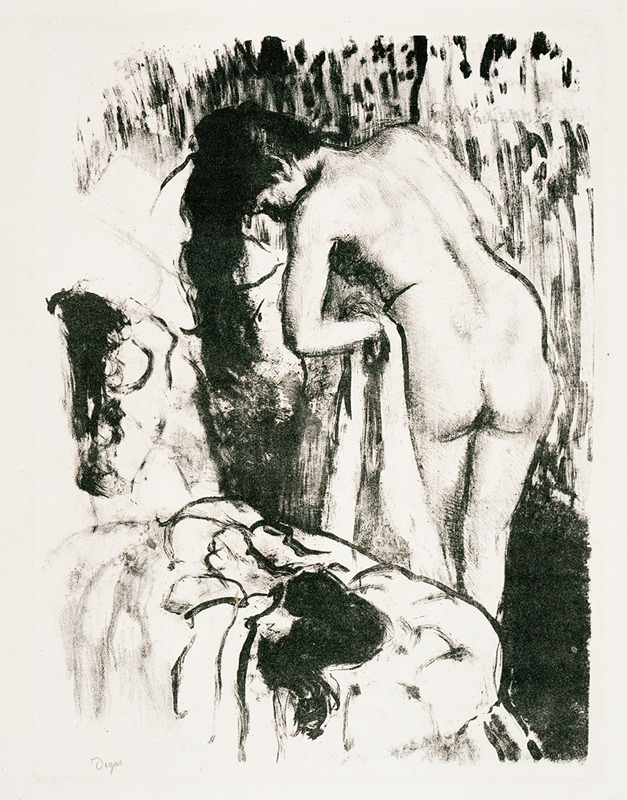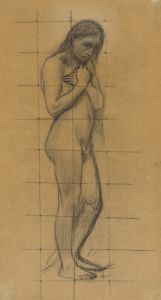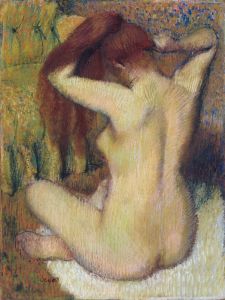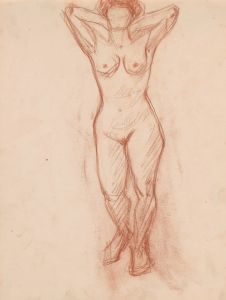
Nude Woman Standing, Drying Herself
A hand-painted replica of Edgar Degas’s masterpiece Nude Woman Standing, Drying Herself, meticulously crafted by professional artists to capture the true essence of the original. Each piece is created with museum-quality canvas and rare mineral pigments, carefully painted by experienced artists with delicate brushstrokes and rich, layered colors to perfectly recreate the texture of the original artwork. Unlike machine-printed reproductions, this hand-painted version brings the painting to life, infused with the artist’s emotions and skill in every stroke. Whether for personal collection or home decoration, it instantly elevates the artistic atmosphere of any space.
Edgar Degas, a prominent French artist associated with the Impressionist movement, is renowned for his masterful depiction of the human form, particularly in moments of candid, everyday activity. One of his notable works, "Nude Woman Standing, Drying Herself," exemplifies his skill in capturing the subtleties of human posture and movement. This artwork is part of a series of pastels and paintings where Degas explored the theme of women engaged in intimate, private moments of bathing and grooming.
"Nude Woman Standing, Drying Herself" was created in the late 19th century, a period when Degas was deeply immersed in studying the human figure. Unlike many of his contemporaries, Degas often chose to depict his subjects in unguarded, natural poses rather than idealized forms. This particular piece showcases a woman standing, absorbed in the act of drying herself after a bath. The composition is notable for its focus on the naturalism of the pose, capturing the woman in a moment of personal routine.
Degas employed pastels for this work, a medium he favored for its ability to convey texture and subtle gradations of color. The use of pastels allowed him to create a soft, almost tactile quality to the skin, enhancing the realism of the scene. The color palette is typically muted, with gentle tones that emphasize the warmth and naturalism of the human body. The background is often minimalistic, drawing attention to the figure and her actions.
The depiction of women in various stages of bathing was a recurring theme in Degas's work, reflecting his interest in the private, unposed moments of everyday life. This focus on the intimate and the ordinary was somewhat unconventional at the time, as many artists preferred grand historical or mythological subjects. Degas's approach was more modern, aligning with the Impressionist interest in contemporary life and the fleeting nature of light and movement.
Degas's treatment of the female form has been the subject of much discussion and analysis. Some critics view his work as a celebration of the beauty and grace of the human body, while others interpret it as an exploration of the vulnerability and solitude of his subjects. Regardless of interpretation, "Nude Woman Standing, Drying Herself" is a testament to Degas's ability to capture the essence of a moment with sensitivity and precision.
The artwork is part of the collection at the Musée d'Orsay in Paris, which houses many of Degas's works. The museum is renowned for its extensive collection of Impressionist and Post-Impressionist masterpieces, providing context for Degas's contributions to the art world. "Nude Woman Standing, Drying Herself" remains a significant piece within Degas's oeuvre, illustrating his mastery of form, movement, and the pastel medium.
In summary, "Nude Woman Standing, Drying Herself" by Edgar Degas is a quintessential example of the artist's exploration of the human figure in intimate, everyday settings. Through his use of pastels and focus on naturalism, Degas captures a moment of personal routine with both realism and artistry, contributing to his legacy as a pivotal figure in the Impressionist movement.


















